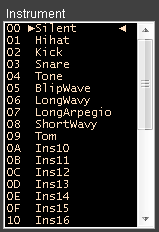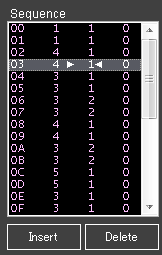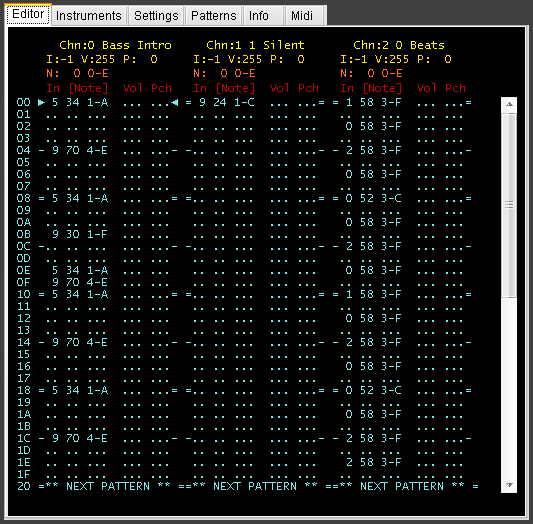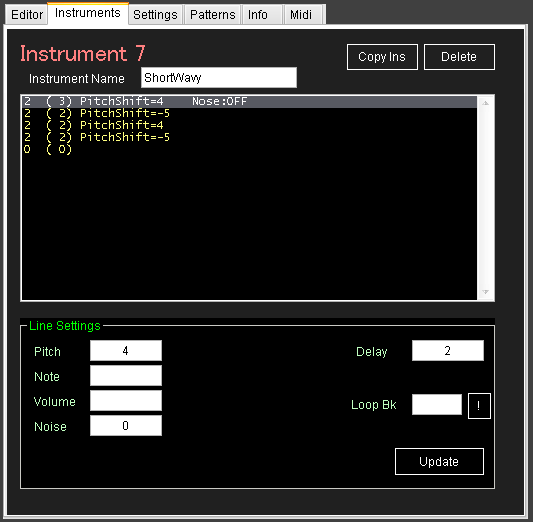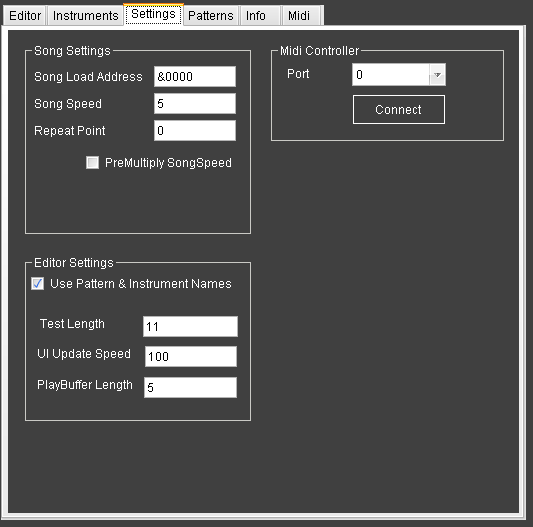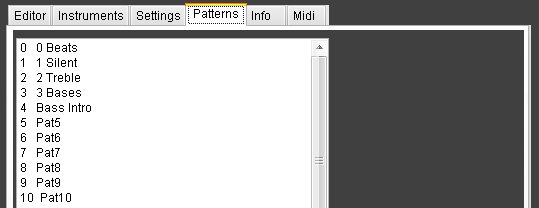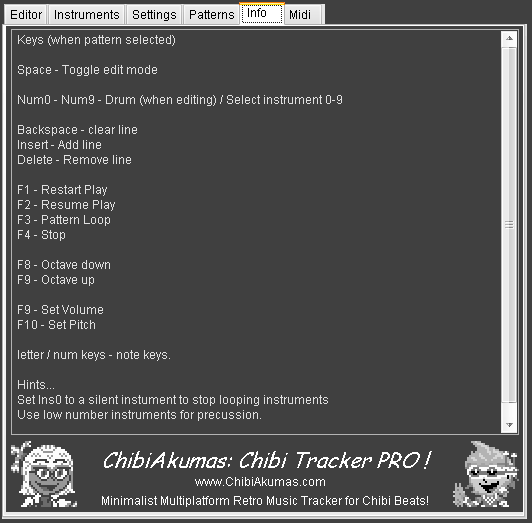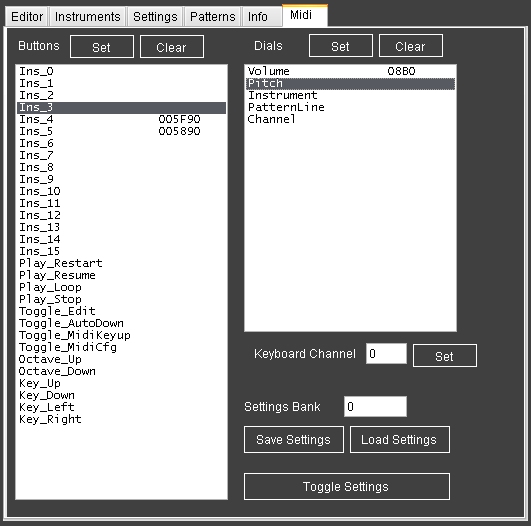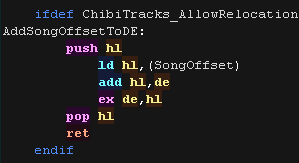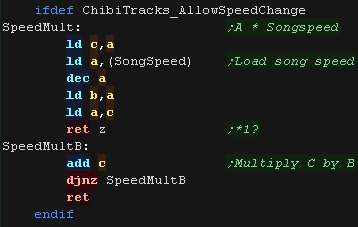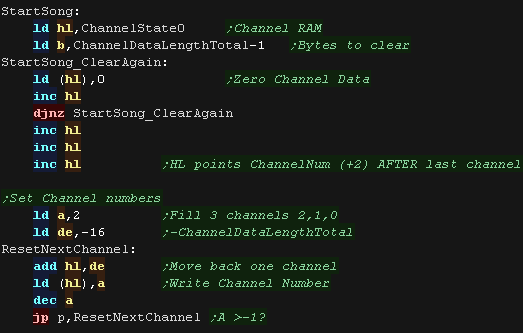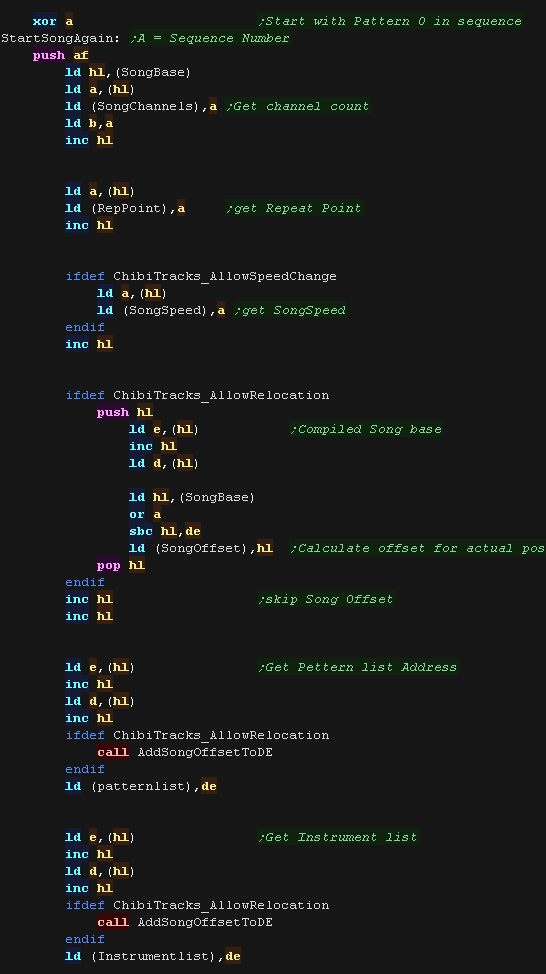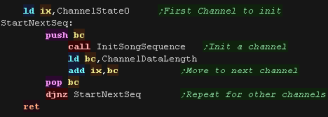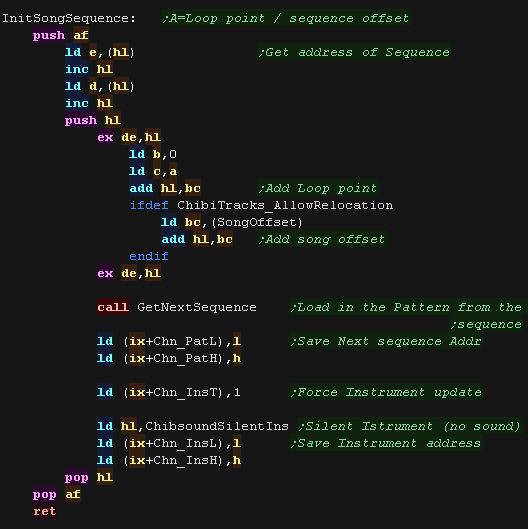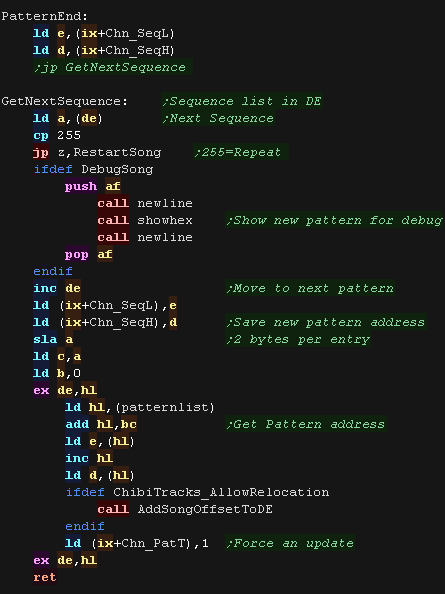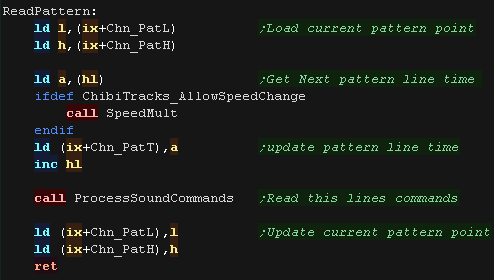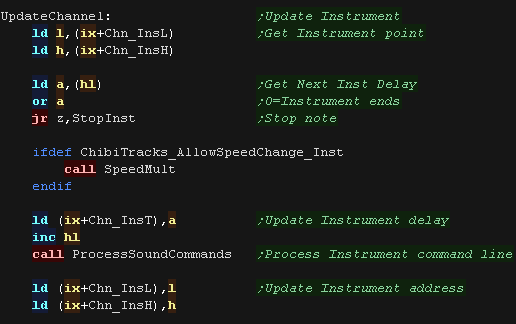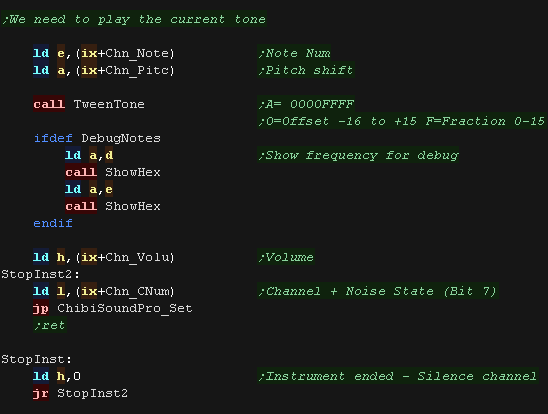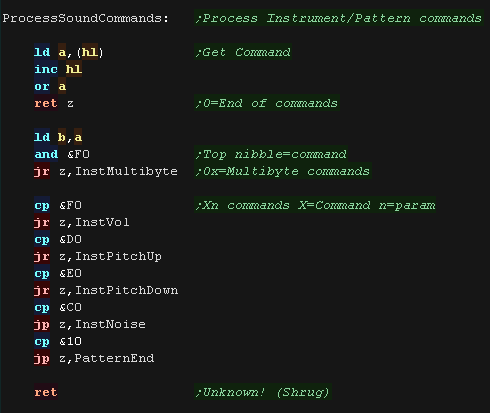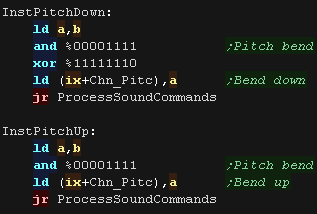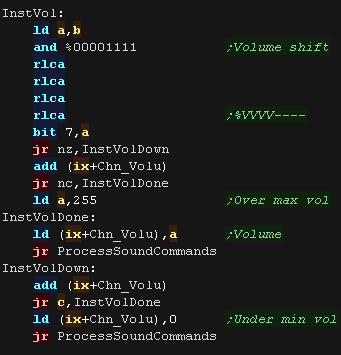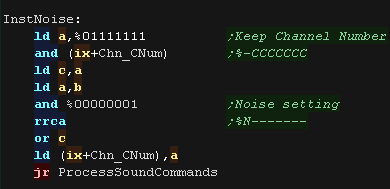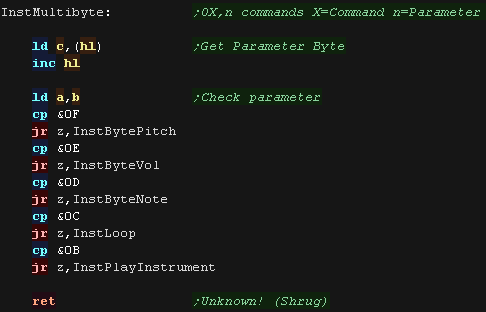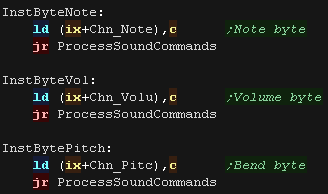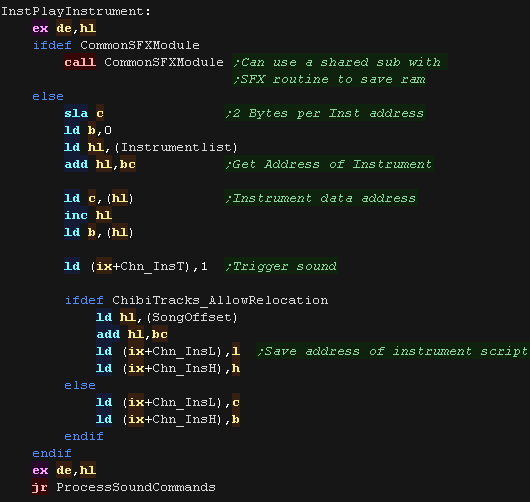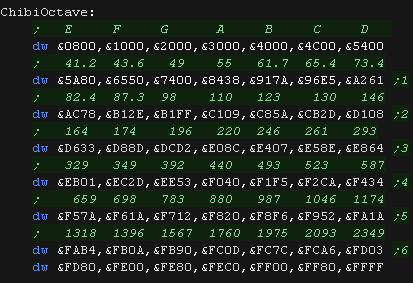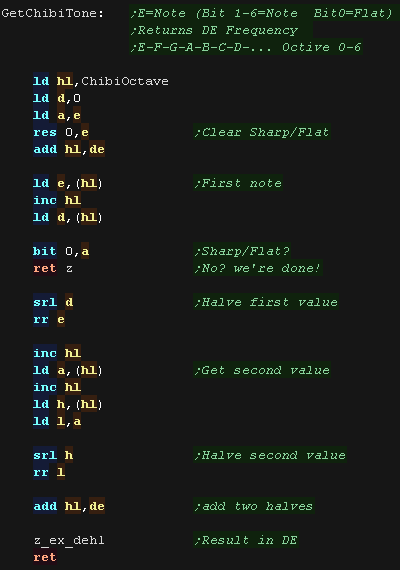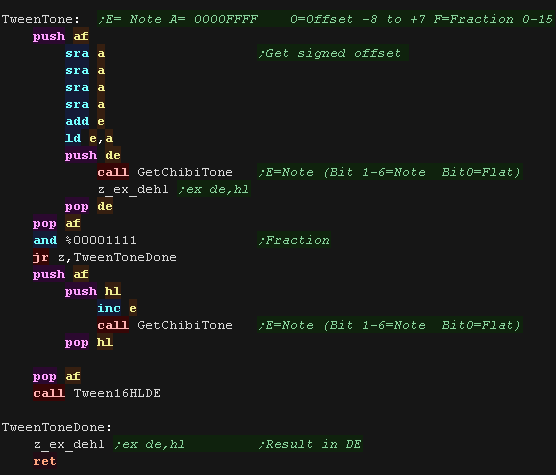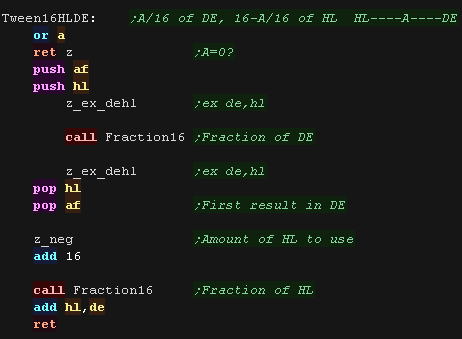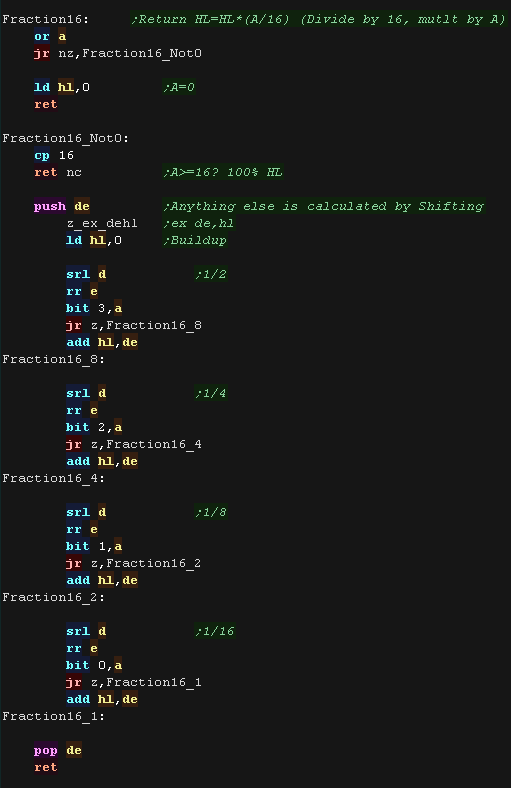ChibiTracks is designed for simple music and provides a multiplatform solution to play a single compiled music binary file on multiple platforms.
ChibiTracks is NOT designed to provide advanced features comparable to solutions like ArkosTracker
To understand how ChibiTracks works, lets look at all the components:
ChibiSound PRO
ChibiSound is the sound driver that handles the particularities of a system, there is typically one driver per system, though the CPC and MSX drivers are essentially identical except for the AY register setting routines.
The original 'ChibiSound' gave us one channel, one Volume bit, six pitch bits, and the ability to turn noise on. Pitches were not matched across systems, so sound 32 won't sound the same on all systems.
The updated 'ChibiSound Pro' gives us all the channels provided by the hardware, 8 volume bits, 16 pitch bits, and the ability to turn noise on. Pitches were not matched across systems, however the 'ChibiOctave' lookup table provides values which ARE matched across all systems.
ChibiSound PRO is essentially a reduced subset of AY functionality, and was designed on the Z80 - it's 'PRO' suffix is a parody of the 'SoundBlaster PRO' - which could only do 8 bit sound so wasn't up to professional standards! (neither is ChibiSound PRO)
ChibiSound PRO provides a standard interface to the underlying hardware, it allows the following features to be set for each channel on the underlying hardware:
| Function |
Register |
Notes: |
| Channel Number (bit 0-6) Noise On/Off (bit 7) |
H | Multiple channels can be supported, but on single channel
systems only Channel 0 will be sure to play. If possible Channel 0 will be a center channel, Channels 1+ may be left/right Noise bit turns the noise effect on (1) or off (0) - this can be set on any channel, if the underlying hardware only supports one noise channel, this will be resolved by the driver. |
| Volume | L | Set volume of the channel (0-255). Higher numbers are louder. O is off |
| Pitch | DE | Set the pitch of the channel (0-65535). Higher numbers are
higher pitch. Using DE does not standardize the resulting pitch - however a 'Lookup table' of notes 'ChibiOctave' provides a standardized way of getting the correct DE value to get a pitch correct note on the platform. |
Chibisound PRO does not offer features like Envelope, LFE etc, as providing consistent functionality across different platforms would not be realistic.
ChibiTracks
ChibiTracks is the player for music files.
A Song contains multiple Channels (Currently tested for 3)
A Channel takes it's commands from a Sequence of Patterns
Patterns contains a set of lines. Each of the lines contain a sequence of one or more commands, and a delay to wait until the next line.
Channels also play instruments (usually started by the pattern). These are also a sequence of commands and delays, and are used to set ChibiSound settings for the playing sound. A channel will stop making a sound when an instrument ends (unless it loops)
It is important to note that functionally Patterns and Instrument command lines are identical - they are literally processed by the same code in ChibiTracks, however it would not make sense to
ChibiTracker PRO can output two kinds of file - a binary file (.CBT)
which can be used with any player, or an ASM file - the default format
used to save and reload files (.ASM) - This is a VASM/MAXAM compatible
Z80 ASM file which contains all the binary data in DB/DW lines, and all
extra data for the player in rem statements (Starting with a semicolon).
There should be no difference between an compiled ASM and a binary CBT
file.
There are two optional functions which can be enabled (but make the player larger)
ChibiTracks_AllowRelocation - This allows a song to be played from a different address than it was built, For example if a CBT binary was a save address of &4000, it can be loaded and played from address &8000 provided this function is enabled.
This function is mandatory on 68000, as only 16 bit addresses are specified in the binary files.
ChibiTracks_AllowSpeedChange - This allows the speed of songs to be changed via the 'SongSpeed' function - allowing songs to be sped up or slowed down on playback at the cost of a slightly slower and bigger player - Alternatively you can save with the 'PreMultiply Song Speed' option - in which case it's not needed.
ChibiTracks - A song file!
Lets take a look at the ASM file to see how ChibiTracks works.
| At the start of the ASM file is the 'ChibiTracker' block These lines all appear as comments in the ASM file, but are functional lines to ChibiTracker PRO. These define settings and data that are used by the editor, but are not needed by the ChibiTracks player - because they are in REM statements, they will not be contained in any built file. |
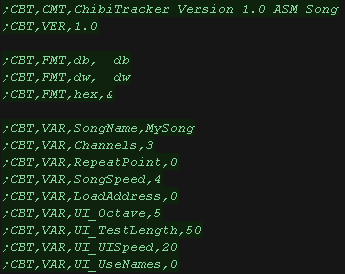 |
| Next is the binary header - this is used by ChibiTracks
player.... All 16 bit addresses are in Little Endian (even on
68000) This contains the channel count (Should always be 3 at this stage as the player does not support more) Repeatpoint is the entry number in the sequence which the song should restart when it reaches the end. Songspeed is the multiplier for the line delay, A delay of 2 with a song speed of 5 would wait 10x interrupts before moving to the next line. NOTE: it is possible to assemble the player without songspeed support (ChibiTracks_AllowSpeedChange not defined). You can still get the same result by saving with 'Premultiplied songspeed' option enabled in ChibiTracker PatternList is a pointer to the pattern list table. This list appears at the end of the ASM file InstrumentList is a pointer to the Instrument list table. This list appears at the end of the ASM file There then follows one 16 bit address for each channel, which points to the sequence of patterns for that channel. |
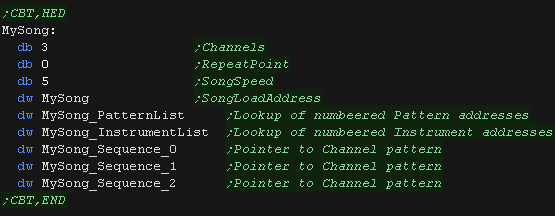 |
| The Sequences define the pattern numbers that make up the
song. These are looked up in the PatternList table. Patten 255 represents the end of the song, at which play will resume at the repeatpoint. |
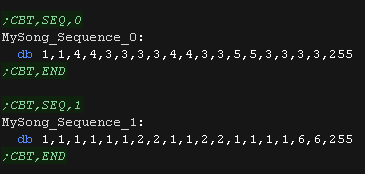 |
| Here are two sample patterns. Each line in the ASM file is a line of the pattern. Lets take a look at one! db 2,&0D,&3A,&0B,&01,&00 ;2 first is the length of the delay after this line before the next line is processed. 2 means 2*Songspeed ticks until the next line. There then follows a sequence of commands to be processed by ChibiTracks. &0D means set pitch to note &3A &0B means play instrument &01 &00 is the 'End of commands' command, the player will wait until the delay finishes before processing the next line db 1,&10,&00 ;33 Line 33 of the first pattern just has the 'End of pattern' command &10 - This tells the player to move to the next pattern in sequence - The delay has no effect in this case |
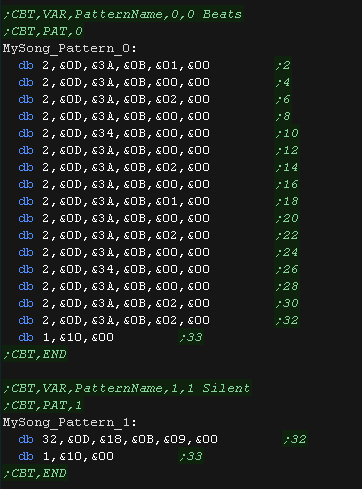 |
| Instruments are in the exact same format, and use the exact same
decoding routine of the player. However!... a instrument should end with a delay of 0, at which point the instrument will stop sounding. it is also possible to loop an instrument with a loop (Byte &0C, followed by a negative byte), the byte value will be added (subtracted) from the current position in the command sequence, effectively looping part of the sequence. To stop such a loop, a silent instrument, or other instrument should be played on the channel to stop the looping one. |
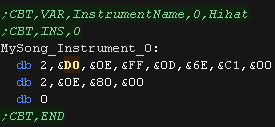 |
| At the end of the song data is the PatternList and
InstrumentList, These are a table of little endian 16 bit addresses of the pattern and instrument command sequences. |
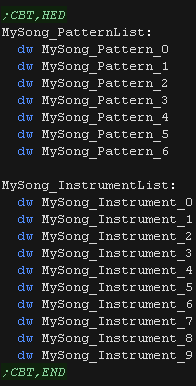 |
ChibiTracks - Byte commands
There are two types of command in ChibiTracks.
One Byte commands have the command number in the high nibble, and the 4 bit parameter in the bottom nibble, For Example &F1: &F_ = Shift volume &_1= Volume up 1
Two Byte commands have a second byte parameter, their top nibble is always Zero, For Example &0E,&FF: &0E = Set Volume &FF= New Volume
| Command Type |
Byte Data |
Notes |
| One Byte | &Fx |
Vol shift -8 to +7 |
| &Ex |
Pitch shift down 0 to -15 |
|
| &Dx |
Pitch shift up 0 to +15 |
|
| &Cx | Noise state x (1=on 0=off) |
|
| &10 |
End of Pattern |
|
| Two Byte | &0F,x | Pitch to x |
| &0E,x | Vol to x | |
| &0D,x | Note to x (Even=true pitch Odd = Flat/Sharp) | |
| &0C,x | Loop to Offset -0 to -255 bytes (eg &FF = back 1 byte) | |
| &0B,x | Play Instrument x | |
| &01,x &02,x &03,x &04,x | Reserved for you to add custom functionality to the player! (Named in ChibiTracker IXH IXL IYH IYL) |
Top Nibble commands: &B0 A0 90 80 70 60 50 40 30 20 spare!
Two Byte Commands: &0A 09 08 07 06 05 04 03 02 01 spare!
ChibiTracker PRO is a DotNet 3.5 application, it has also been complied
correctly in newer versions of DotNetYou can find the sourcecode for
Chibitracker in the Z80 sources.... see the folder "sources/C#
Tools/ChibiTracker"
There's a pre built EXE file in the sources/tools folder.




